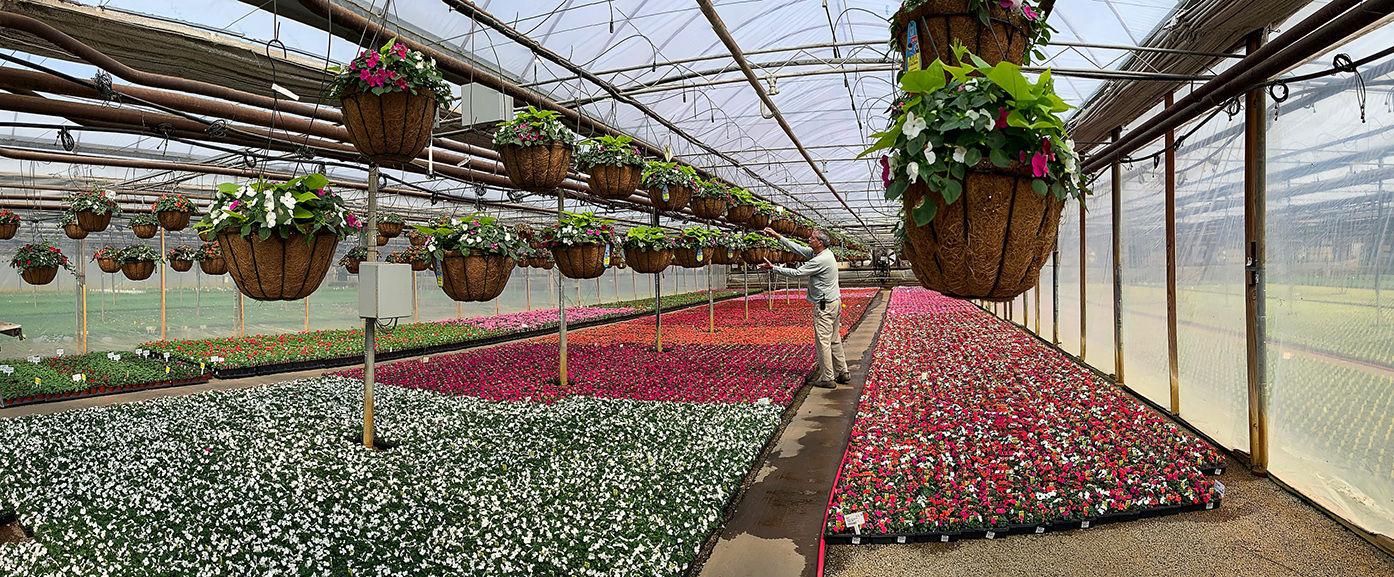
Written by Art Petrosemolo
If you have been or are a flower person, you’ll recognize the name Impatiens. The official name is Impatiens walleriana and it had been one of the top three colorful, reliable shade bedding plants for more than a half century until – here in the East – until it was devastated by Impatiens downy mildew (Idm) in 2012. It was a tremendous financial hit to the garden industry and many gardeners were close to tears at the loss of their favorite bedding plant.
Well, it may have taken seven years, but a disease resistant Impatiens walleriana is back and industry experts say it is poised to regain its position in the green industry for commercial landscapers and home gardeners.
Here’s the story. Millions of Impatiens seeds were produced each year by Syngenta, American Seed and other companies and greenhouses grew plants and sold flats by the thousands to home gardeners and landscapers who used the reliable, easy-to-care-for Impatiens in shady areas as a ground cover with color.
According to Jeanne Sbob, business manager for seeds at Griffin Greenhouse Supplies, and a big distributor of Impatiens seeds, within two years of the 2012 attack, the sale of Impatiens seeds was down 40 percent nationwide. The East was totally devastated but other parts of the country that were dryer were able to continue to use the plant.
If you thought you were a big user of Impatiens walleriana, think about the large landscapers. Brightview is the largest commercial landscaper in the country and according to Bruce Hellerick who heads their technical services, they went from using millions of Impatiens plants nationally in 2012 to zero in the East in 2013. And for several years, they have encouraged clients to use alternative plants like begonias and coleus, which do the job but have none of the color that Impatiens have. Customers adjusted but weren’t happy.
Here at Garden Spot, Scott Weaver stopped using Impatiens after the Idm outbreak and advised residents of the possibility they might lose Impatiens they were planning to plant because of the disease.
The Idm that devastated the East was carried North on winds from Florida and hit soon after all the plants were in the ground in 2012. Rob Swanenkamp, a large grower from Allentown, NJ, had just finished shipping 75,000 flats of Impatiens that year when the Idm hit. Today, seven years later, he is lucky if he grows and ships 11,000 and most of those are not Impatiens walleriana but the new, disease resistant variety. “The market is fractured,” Swanenkamp says. “Customers have learned to love SunPatiens, New Guinea Impatiens and other bedding plans and I don’t think Impatiens walleriana will ever regain its top three in the nation status anytime soon.”
The Idm disease initially came from Africa where Impatiens originated and made a brief stop in the US in 2004; a stop no one gave much credence too. However, the seed breeders did and started to develop disease resistant Impatiens immediately but when Impatiens in England were devastated in 2011 and it hit the US in 2012, the seed breeders were starting to make progress but nowhere ready to release a new, disease resistant variety of Impatiens.
According to Katie Rotella of Ball Horticulture who owns American Seed, “It takes years to develop a new seed and then it has to be greenhouse and field tested before released to the public.” And in the case of Impatiens she reminded me, there were more than 20 colors on the market and each color takes additional time to create via cross-breeding.
Syngenta was the first company to introduce an Impatiens downy mildew resistant seed in Imara XDR that was field tested heavily in 2017 and released to the public this year. Frysville Farm in Ephrata, along with other greenhouses and garden centers, are selling the new plants (look for an Imara tag in the plant) and seeds. American Seed’s entry—Beacon—is in extensive field tests this year with a worldwide introduction planned for January. Syngenta has introduced 10 colors to start and American Seed is testing six. It is unlikely that the new disease resistant Impatiens will have a color palette anytime soon.
It’s been a rocky seven years for fans of this easy-to-care-for, reliable ground cover that, hopefully is over.
Most of the growers and greenhouse owners today recognize we are in a transition period with the traditional and new generation of Impatiens walleriana but are optimistic the market will fully recover in the years to come with the disease resistant varieties as gardeners and landscapers gain confidence in the new seeds and plants.
But there are no guarantees in this world everyone says and only time will tell!